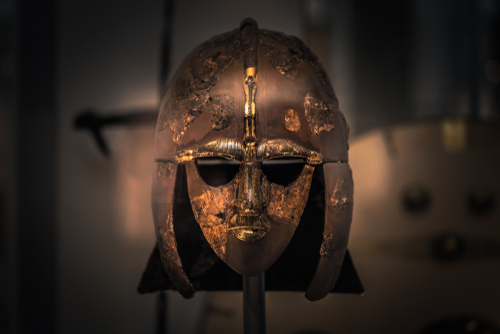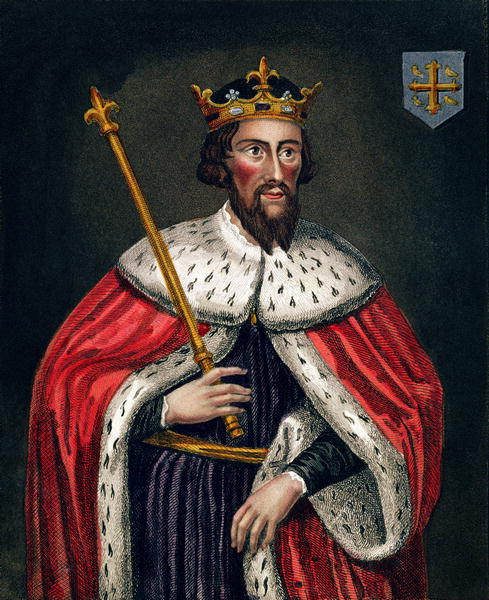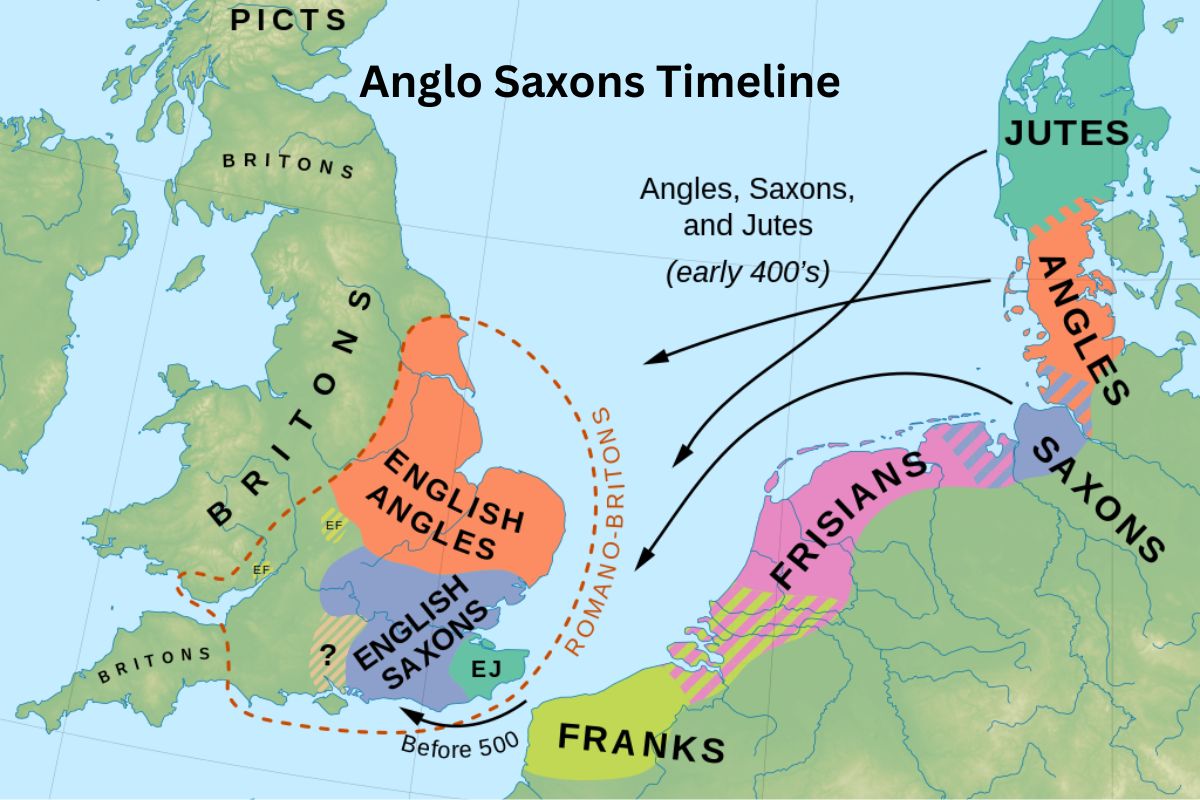The Anglo-Saxons were Germanic tribes who settled in early medieval England, from the 5th to 11th centuries.
This period shaped English history, culture, and language. It saw tribal migrations, Christianity’s spread, the rise of powerful kingdoms, Viking invasions, and the 1066 Norman Conquest.
The Anglo-Saxons established governance, created Old English, and left historical records. Key figures like King Alfred and events like the Battle of Brunanburh defined this era.
It’s marked by contributions to Christianization, like St. Augustine and the Synod of Whitby, leaving a lasting impact on England’s language, literature, and heritage.
| Century | Key Events and Developments |
|---|---|
| 5th Century | – Roman Empire withdraws from Britain |
| – Anglo-Saxon invasions begin | |
| 6th Century | – St. Augustine’s arrival and Christianization |
| 7th Century | – Synod of Whitby resolves Christian differences |
| – Venerable Bede completes his history | |
| 8th Century | – Viking raids begin, starting with Lindisfarne |
| – Danelaw established under Viking control | |
| 9th Century | – Reign of King Alfred the Great |
| 10th Century | – King Athelstan’s victory at Brunanburh |
| – Period of instability after Edward the Martyr’s death | |
| 11th Century | – King Cnut becomes Viking king of England |
| – Norman Conquest in 1066, ending Anglo-Saxon rule |
Timeline of the Anglo Saxons
5th Century
Roman Withdrawal (410-449):
The 5th century marked the decline of Roman rule in Britain, as the Roman Empire faced internal challenges and external threats.
Also Read: Facts About the Anglo Saxons
Between 410 and 449, the Romans gradually withdrew their troops and administration from Britain, leaving the province vulnerable to outside invasions.
Anglo-Saxon Invasions:
With the Roman legions gone, various Germanic tribes, collectively referred to as the Anglo-Saxons, began migrating to Britain from areas like modern-day Germany and Denmark.
These migrations led to the gradual establishment of Anglo-Saxon kingdoms in different regions of Britain.

6th Century
St. Augustine’s Arrival (597):
In 597, Pope Gregory I sent St. Augustine to England to convert the Anglo-Saxons to Christianity. Augustine arrived in Kent and was welcomed by King Ethelbert.
Also Read: Feudalism Facts
This marked the beginning of Christianization in England, and Augustine went on to become the first Archbishop of Canterbury.
Synod of Whitby (664):
The Synod of Whitby was a significant ecclesiastical council held to resolve differences in Christian practices between the Celtic Christians, who followed Irish traditions, and the Roman Christians.
King Oswiu of Northumbria convened the synod, and it resulted in the adoption of Roman Christian practices, including the Roman method of calculating the date of Easter, which had a unifying effect on Christianity in England.
Venerable Bede’s “Ecclesiastical History” (731):
The Venerable Bede, a Northumbrian monk and scholar, completed his “Ecclesiastical History of the English People” in 731.
This work is a primary source for understanding the early history of England, including the conversion to Christianity, the role of important figures like Augustine, and the political and religious developments of the time.
8th Century
Viking Raids (793):
In 793, Viking raiders from Scandinavia launched a devastating attack on the monastery of Lindisfarne in Northumbria. This event is often considered the beginning of Viking incursions in England.
Over the course of the 8th and 9th centuries, Vikings continued to raid and settle in various parts of England, establishing the Danelaw in the north and east.
Danelaw (800s):
The Danelaw was a region in England under Viking control and influence. It encompassed parts of modern-day northern and eastern England.
Under the Danelaw, Viking law and customs held sway, and there was a blending of Anglo-Saxon and Viking cultures. This period saw a significant Norse influence on the English language and legal systems.

9th Century
Reign of King Alfred the Great (871-899):
King Alfred, ruler of the Kingdom of Wessex, played a crucial role in defending England against Viking invasions. He is known for his military successes, including the victory at the Battle of Edington in 878, which led to the Treaty of Wedmore with the Viking leader Guthrum.
Also Read: Facts About Alfred the Great
Alfred’s reign also saw important cultural and educational developments, including the promotion of learning and the translation of key texts into Old English.
10th Century
Battle of Brunanburh (937):
King Athelstan, grandson of Alfred the Great, achieved a significant victory at the Battle of Brunanburh. This battle saw an alliance of Anglo-Saxon forces, led by Athelstan, defeat an alliance of Viking and Scottish forces.
The victory helped consolidate Athelstan’s rule and strengthen the Kingdom of England.
Period of Instability (Late 10th Century):
After the death of King Edward the Martyr in 978, England experienced a period of instability and dynastic struggles.
This period, sometimes referred to as the “Late Saxon” or “Pre-Conquest” period, saw various Anglo-Saxon monarchs come to power and face challenges from within and outside the kingdom.
11th Century
King Cnut (1016):
King Cnut (Canute) became the first Viking king of England after a series of battles and political maneuvering. His rule marked a period of Danish control over England, and he sought to create a unified Anglo-Scandinavian kingdom.
Norman Conquest (1066):
The Norman Conquest of England occurred when William the Conqueror, Duke of Normandy, defeated King Harold II of England at the Battle of Hastings in 1066.
This event marked the end of the Anglo-Saxon rule of England and the beginning of Norman rule. It had profound consequences for English society, culture, and governance.
